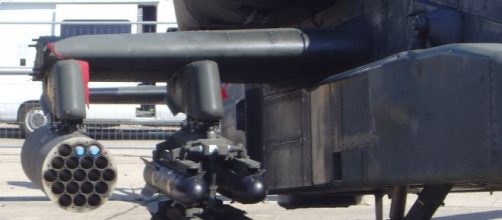Months ago, the U.S. Army and US Navy awarded a $66.5 million contract to Lockheed Martin to develop a new-generation air-to-ground missile for helicopters and unmanned aerial vehicles (UAVs), also known as the Joint Air-to-Ground Missile (JAGM). This week, the US Army is asking the American defense contractor to beef up the production rates of the next-generation weapon system.
At the US Army Contracting Command Center in Redstone, Alabama, the US army officials have asked the Bethesda-based company to double the rate of production of the JAGM weapon system, from 50 to 100 missiles per month under terms of a $15.5 million order, according to Military and Aerospace Electronics.
The US military has tapped Lockheed Martin to replace the U.S. Army and Navy’s aging missile inventories, which include a large number of Maverick, Airborne TOW, and Hellfire missiles. The US defense firm has developed the JAGM next-generation air-to-ground weapon system for the US Army’s MQ-1C Gray Eagle unmanned aerial vehicle (UAV), AH-64 Apache attack helicopter, US Marine Corps’ AH-1Z Viper attack helicopter, and the US Navy’s MH-60R helicopter.
How the next-generation JAGM weapon system works
Developed by the Lockheed Martin Missiles and Fire Control division in Florida, the JAGM is a next-generation air-to-ground missile and a follow-on from the unsuccessful AGM-169 Joint Common Missile program that was canceled by the Pentagon due to extreme budget cuts.
The new weapon system features a multi-mode guidance system section with a semi-active laser sensor for a precision-strike mission. The missile also comes with a fire-and-forget millimeter-wave radar (MWR), which allows the aircraft firing it to escape quickly after the missile launch. It can engage both stationary and moving targets in all weather conditions.
Future enhancements to the JAGM weapon system will include a new rocket motor or propulsion system that will allow the missile to fire from a fast-moving tactical aircraft like the F-35 Joint Strike Fighter and the US Navy’s F/A-18 Super Hornet. There also plans to include the JAGM to some of the USAF’s tactical fighter planes as well as the US Marines’ Harrier jump jet and other attack platforms.
The Pentagon tests a new mid-range ballistic missile
In another defense-related story, the Pentagon launched a new prototype of a ground-launched ballistic missile as part of a broader effort to increase attack options as well as beef up its deterrent efforts.
According to Fox News, the missile launch took place at Vandenberg Air Force Base in California. The missile was launched from the Air Force’s launch platform and terminated in the open ocean after more than 500 kilometers of flight, Fox News reported.
Data collected from the missile test will be used by the Defense Department in the development of their future intermediate-range ballistic missiles. The new missile is expected to bolster the US military’s intermediate-range attack platforms and offer advantageous strike capabilities.
If fully developed and deployed with the US military, the new missile will allow the US forces to attack the Russian armored forces massing around the Eastern European region, like in Poland and Balkan countries. In addition to that, the new missile could also help US forces to hit heavily-defended targets from safer standoff distances.


